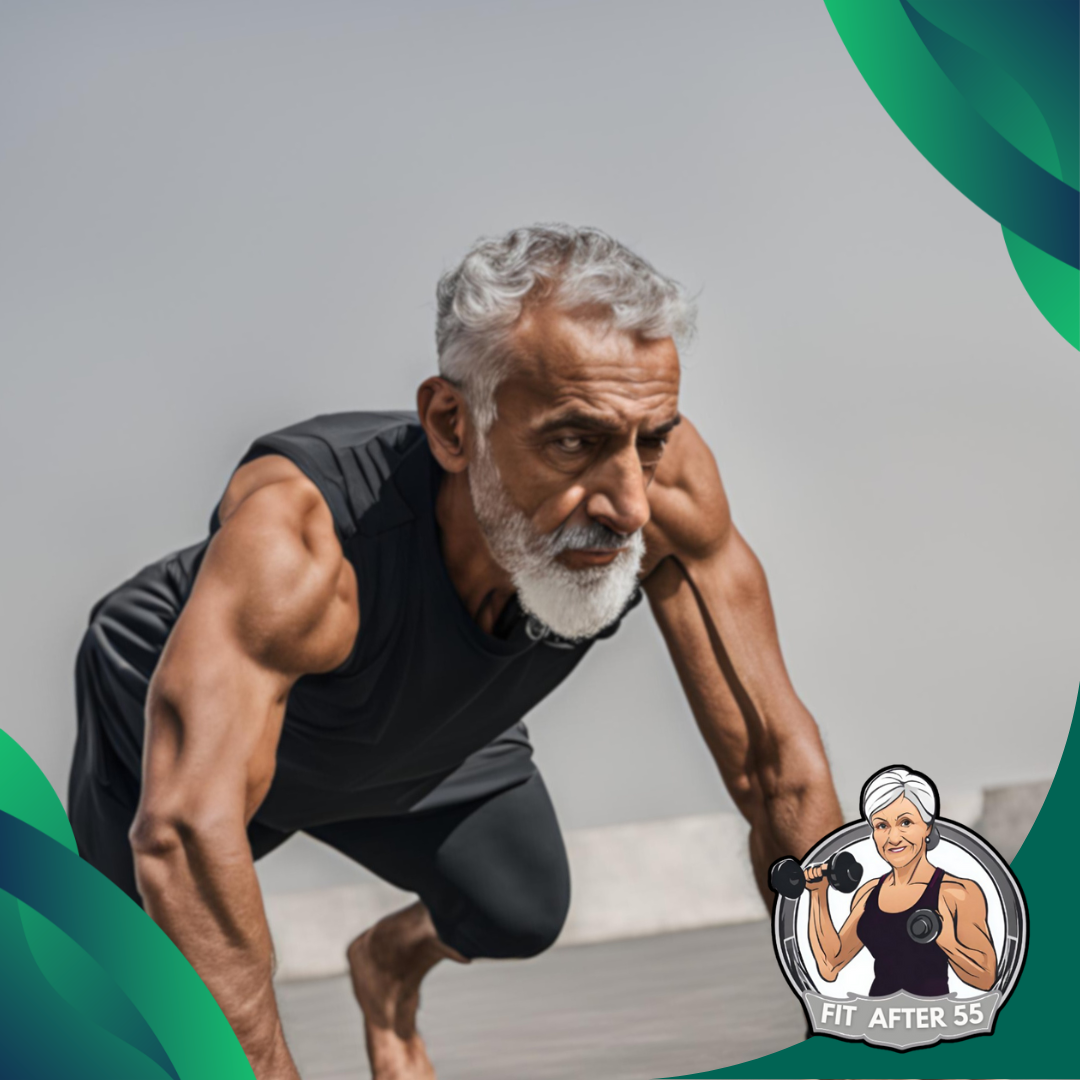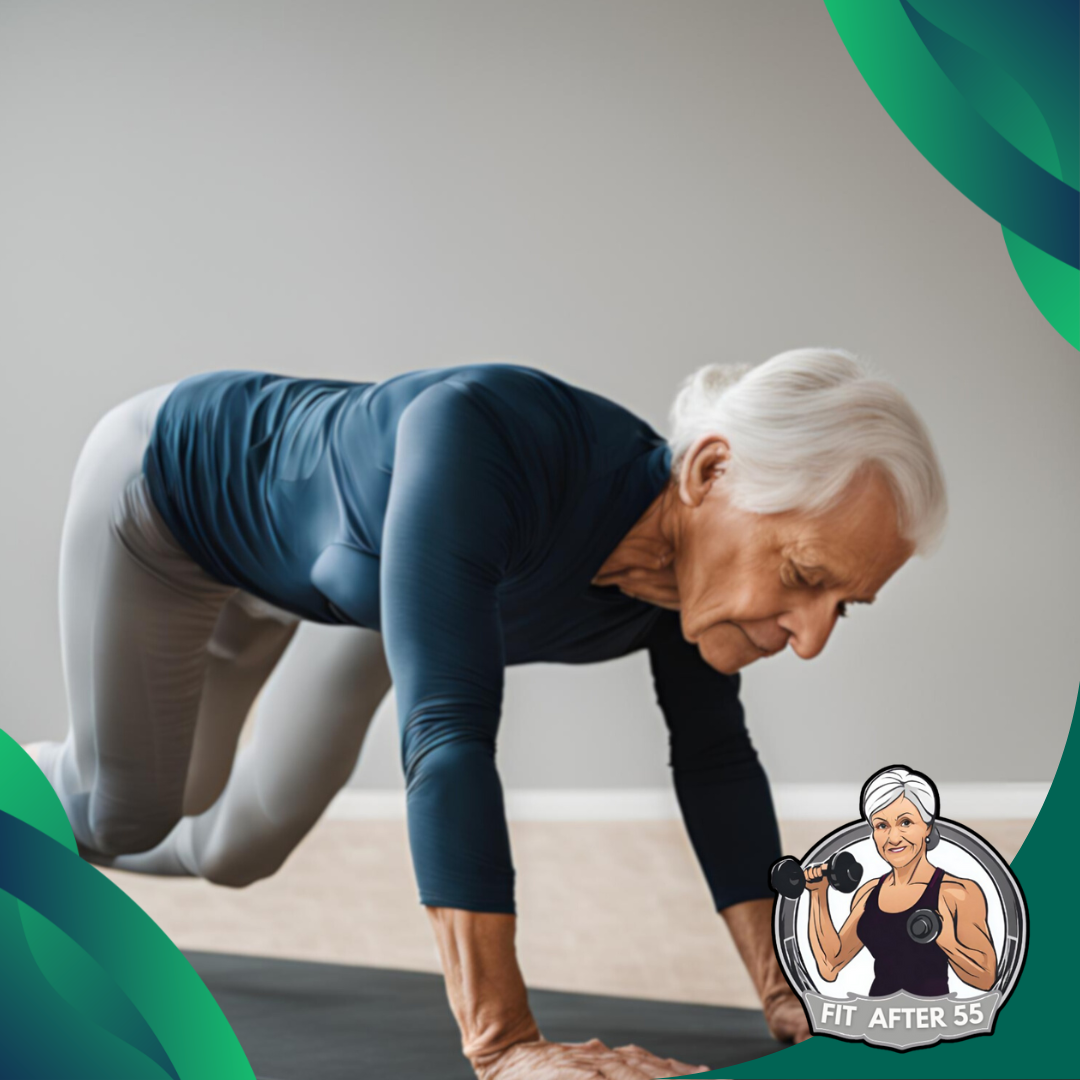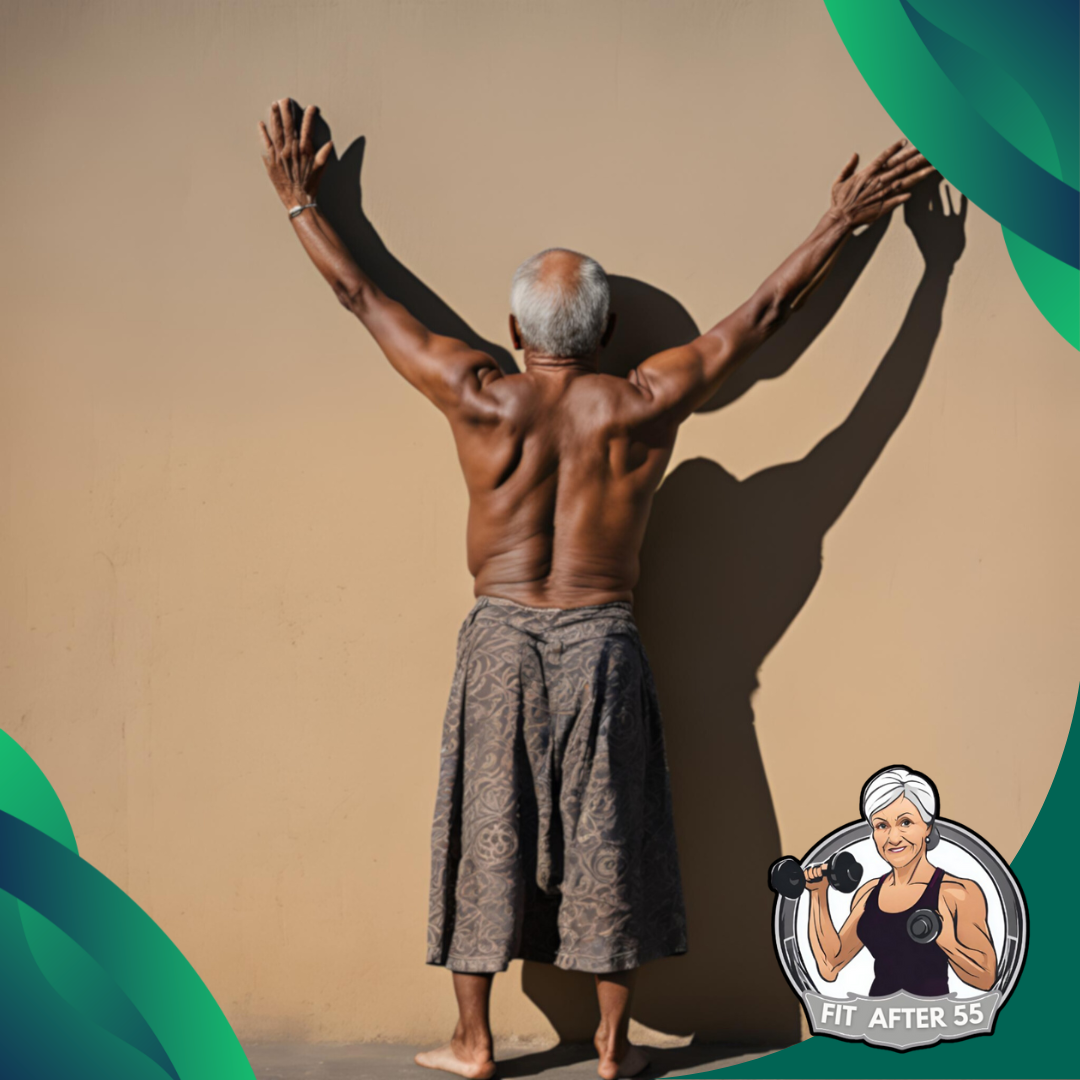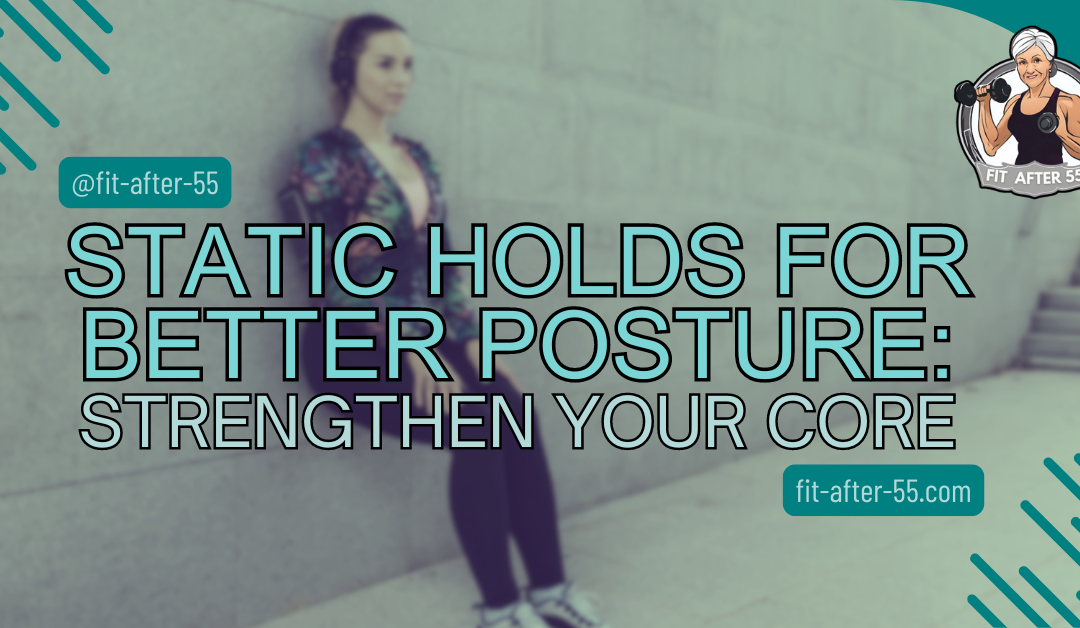Static holds for better posture offer a powerful method to enhance core strength and alignment. Incorporating these exercises into your routine can significantly improve your stability and posture, leading to a more confident and comfortable stance throughout the day. This article will guide you through how static holds can effectively target your core muscles and support better posture, helping you achieve a more balanced and well-aligned body.
In addition to strengthening your core, static holds are simple to integrate into any fitness regimen and require minimal equipment. Whether new to core exercises or looking to refine your technique, understanding the benefits and proper execution of static holds will be vital to transforming your posture and overall physical well-being. Let’s explore how these straightforward yet impactful exercises can make a difference in your daily life.
Static Holds for Better Posture: Strengthen Your Core and Improve Alignment

Bad posture is a common issue that often leads to discomfort and pain. Hours spent hunched over computers or phones can result in lasting damage to the spine and muscles. To address this problem, static holds for better posture provide a practical solution. By strengthening the core and enhancing overall alignment, static holds offer a straightforward yet effective method for improving posture and targeting key muscle groups.
Static holds involve holding a position for a set time to build strength and stability in specific muscles. These exercises can help fix posture issues by training your body to maintain proper alignment. They also boost core strength, which is key for good posture.
Some popular static holds for better posture include planks, wall sits, and hollow body holds. These moves target the muscles that support your spine and help you stand tall. By doing static holds regularly, you can train your body to keep a good posture without thinking about it.

Key Takeaways
- Static holds effectively build the strength needed for good posture by targeting essential core and supporting muscles.
- Consistent practice of static holds can lead to noticeable improvements in posture and alignment.
- Static holds are easy to integrate into any routine with minimal equipment, making them accessible for all fitness levels.
- Regular static holds improve body awareness and help you maintain proper alignment throughout the day.
- Pair static holds with good ergonomics and mindful movement throughout daily activities for optimal posture.
Understanding Posture and Its Importance

Posture is how you hold your body when sitting, standing, or lying down. Good posture means keeping your body aligned in a way that puts less strain on your muscles and joints. Incorporating static holds for better posture can significantly improve your alignment and reduce discomfort.
There are two types of posture:
- Static Posture: How you hold yourself when not moving
- Dynamic Posture: How you position your body while moving

Your spine has three natural curves – neck, mid-back, and lower back. Good posture maintains these curves without increasing them. Why is posture important? It can:
- Reduce back pain
- Improve breathing
- Boost confidence
Poor posture can lead to:
- Muscle tension
- Decreased flexibility
- Increased risk of injury
To improve your posture, try these tips:
- Keep your shoulders back and relaxed
- Pull in your abdomen.
- Keep your feet about hip-width apart.
Remember, good posture isn’t just about looking tall. It’s a key part of your overall health and well-being. Maintaining proper posture can prevent many health issues and make you feel more comfortable in your daily life.
Did You Know?
Longer static hold times increase muscle tension, leading to more significant strength gains, which can improve the ability to maintain good posture. Starting with shorter holds and gradually increasing the duration as strength builds is effective. It is important to aim for a challenging but manageable hold time.
The Role of Static Holds in Posture Improvement

Static holds are key exercises for improving posture. These static holds for better posture work by strengthening essential muscle groups and increasing body awareness.
Bio-Mechanics of Posture
Your posture relies on a complex interplay of muscles, bones, and connective tissues. You engage local muscle groups that support good posture when you perform static holds. These include muscles around your shoulder blades, neck, and back.
Static holds challenge these muscles to maintain a fixed position. This builds strength and endurance in the exact positions needed for good posture. Over time, your body adapts to hold these positions more naturally. Proper alignment during static holds is crucial. It trains your muscles to work together efficiently, supporting your spine and joints in optimal positions.
Benefits of Static Holds
Static holds offer several advantages for posture improvement:
- Increased muscle endurance
- Better body awareness
- Improved joint stability
Holding challenging positions builds strength in the muscles that keep you upright. This helps you maintain good posture throughout the day with less effort. Static holds also enhance your proprioception – your body position in space.
This improved awareness helps you catch and correct poor posture habits more easily. For athletes and office workers alike, static holds can boost postural stability. This leads to better performance and reduced risk of injury in various activities.
Here’s an additional video on improving bad posture and looking taller, featuring exercises and causes.
By: Joanna Soh Official
Preparation for Static Hold Exercises

Getting ready for static hold exercises involves safety measures and proper form. These steps help you get the most out of your workout while avoiding injury.
Safety Considerations
Before starting static holds for better posture:
- Clear your workout space.
- Remove any objects that could get in your way.
- Wear comfortable, non-slip shoes for stability. If you’re new to static holds, start with shorter hold times.
- Gradually increase as you build strength.
- Listen to your body and stop if you feel pain.
Keep breathing steady during holds. Avoid holding your breath, as this can raise blood pressure. Have water nearby to stay hydrated. For balance exercises, practice near a wall or sturdy chair. This gives you support if needed. If you have any health concerns, talk to your doctor before starting.
Proper Alignment and Technique
Good form is key for effective static holds. Stand or sit tall with your shoulders back and down. Keep your core engaged to support your spine. For standing holds, place your feet hip-width apart. Distribute your weight evenly between both feet. Keep your knees slightly bent to avoid locking them. When having your arm, keep your wrists in line with your forearms.
This prevents strain on your joints. Focus on squeezing the muscles you’re targeting. Start each hold in the correct position before you begin timing. Maintain this alignment throughout the exercise. If your form starts to slip, end the hold and rest. Use a mirror to check your form when possible. This helps you spot and fix any alignment issues.
Essential Static Holds for Better Posture

Static holds for better posture can significantly enhance your overall strength and alignment. These exercises focus on maintaining specific positions for a set time, targeting key muscle groups that support good posture. By incorporating static holds into your routine, you’ll effectively improve your posture and build strength.
Wall Angels
Wall angels are great for improving upper body posture. Stand with your back against a wall. Keep your feet about 6 inches from the wall. Press your head, shoulders, and lower back into the wall. Raise your arms to shoulder height, bent at the elbows. Slowly slide your arms up the wall, keeping them in contact with the surface. Go as high as you can while maintaining contact. Hold for 10-30 seconds.
This exercise strengthens your upper back muscles and improves shoulder mobility. It helps correct rounded shoulders and forward head posture. Aim for 3-5 sets of wall angels. Rest for 30 seconds between sets. Stop and check your form or consult a professional if you feel pain.

Planks
Planks are excellent for core strength and spinal alignment. Start in a push-up position with your forearms on the ground. Keep your body in a straight line from head to heels. Engage your core muscles. Imagine pulling your belly button toward your spine. Hold this position for 20-60 seconds, depending on your fitness level.
Planks work your entire core, including deep abdominal muscles. They also engage your back, shoulders, and glutes. This full-body exercise improves your static posture. Do 3-5 sets of planks. Rest for 30-60 seconds between sets. If you’re new to planks, start with shorter hold times and build up gradually.
Bridge
The bridge pose targets your glutes, hamstrings, and lower back. Lie on your back with your knees bent and feet flat on the floor. Keep your arms at your sides with palms down. Lift your hips off the ground until your body forms a straight line from knees to shoulders. Squeeze your glutes and engage your core. Hold for 20-30 seconds.
This exercise strengthens the muscles that support your lower back. It helps improve dynamic posture during movement. Perform 3-4 sets of bridges. Rest for 30 seconds between sets. To make it harder, try lifting one foot off the ground while holding the position.
Dead Hang
Dead hangs can decompress your spine and improve shoulder stability. Find a pull-up bar or sturdy overhead surface. Grip the bar with your palms facing away from you. Hang with your arms fully extended. Relax your shoulders and engage your core slightly. Let your body hang freely. Hold for 20-60 seconds, depending on your strength.
This exercise stretches your back muscles and improves grip strength. It can help alleviate tension from prolonged sitting or standing. Start with 2-3 sets of dead hangs. Rest for 1-2 minutes between sets. If you can’t hold your full body weight, use an assisted pull-up machine or resistance bands for support.
Integrating Static Holds Into Your Routine

Static holds for better posture can boost your posture and strength when added to your workout plan. Let’s look at how to fit them in and how often to do them.
Creating a Balanced Workout
Mix static holds with your regular exercises. Start with a plank hold after your warm-up. This gets your core ready for other moves. Try a wall sit between leg exercises. It keeps your muscles working without tiring you out too much.
End your workout with a handstand held against a wall. This helps your shoulders and improves balance. Add a chin-up hold at the top of the movement for arm day. Hold for 10-30 seconds, based on your strength.
Frequency and Duration of Holds
- Do static holds 2-3 times a week. This gives your muscles time to recover and grow stronger.
- Start with short holds of 10-15 seconds. As you get stronger, aim for 30-60 seconds per hold.
- For beginners, try 2-3 sets of each hold. Advanced exercisers can do 3-5 sets.
- Rest 30-60 seconds between sets. This helps you maintain good form for each hold.
- Gradually increase your hold time each week. Add 5-10 seconds when the current time feels easy.
- Listen to your body. If a hold feels too hard, shorten the time or take a break.
Progressing in Static Holds

Static holds for better posture can help improve your posture over time. You’ll build strength and endurance in key muscle groups by gradually increasing the challenge.
Assessing Posture Over Time
Take photos of your posture every few weeks to track progress. Stand sideways and front-facing against a plain wall. Look for changes in your shoulder, spine, and hip alignment. Use a plumb line to check if your ear, shoulder, hip, and ankle line up vertically.
This simple tool can reveal improvements in your overall posture. Keep a posture journal. Note any pain or discomfort during daily activities. As your static hold practice progresses, you may notice less pain and easier maintenance of good posture.
Increasing Intensity Safely
Start with shorter hold times and gradually increase duration. Aim to add 5-10 seconds each week to your static hold exercises. Add small weights to increase difficulty. For example, hold light dumbbells while sitting on a wall to challenge your legs more. Try more advanced variations of basic holds. Move from a high plank to a one-arm plank to test your core stability further.
Incorporate unstable surfaces like balance boards or stability balls. This challenges your muscles to work harder to maintain proper form. Remember to listen to your body. If you feel pain or excessive strain, reduce the intensity or duration of your holds. Slow progress is key to avoiding injury and building lasting postural strength.
Supporting a Healthy Posture Beyond Exercise

Good posture isn’t just about exercise. Your daily habits and mindset play a big role, too. Incorporating static holds for better posture into your routine and making simple changes can make a significant difference in how you hold yourself.
Ergonomics in Daily Life
Your work setup matters a lot for posture. Keep your shoulders back and relaxed when sitting at your desk. Make sure your computer screen is at eye level. Use a chair that supports your lower back. Keep your feet flat on the floor. Take short breaks to stand up and stretch every hour.
At home, choose a supportive mattress for sleeping. Use a pillow that keeps your neck aligned with your spine. When watching TV, avoid reclining on the couch. Wear comfortable shoes with good support. High heels can throw off your alignment. Carry heavy bags on both shoulders to balance the weight.
Mindfulness and Movement
Pay attention to how you hold your body throughout the day. Check your posture often. Ask yourself: Are my shoulders tense? Is my chin tucked? Am I slouching? Try setting reminders on your phone to do quick posture checks. When you catch yourself slumping, gently correct your position.
Practice mindful walking. Focus on each step and how your body moves. Keep your head up and your shoulders back as you walk. Do simple stretches during the day. Roll your shoulders back and down. Gently stretch your neck from side to side. These small movements can help prevent stiffness and improve your posture.
Here’s an additional video on improving posture and shoulder strength with gymnastics exercises.
By: Unity Gym
Unlocking Better Posture: The Lasting Impact of Static Holds on Core Strength and Alignment
Static holds for better posture offer a straightforward yet effective approach to enhance core strength and improve alignment. By consistently incorporating these exercises into a fitness routine, individuals can achieve a more stable and confident stance, benefiting both posture and overall physical well-being. This article has explored how static holds can target key muscle groups to support proper posture, making them a valuable addition to any exercise regimen.

Integrating static holds into a routine is simple and requires minimal equipment, making it accessible for beginners and seasoned exercisers alike. Understanding the benefits and correct execution of static holds is crucial for transforming posture and ensuring long-term improvements. Embracing these exercises can lead to significant changes in posture, providing a more balanced and aligned body. With dedication and practice, static holds can make a lasting impact on daily life and overall health.
Frequently Asked Questions
What Are the Benefits of Static Holds for Improving Posture?
Static holds can strengthen muscles that support good posture. They improve core stability and back strength. These exercises also increase body awareness, helping you maintain proper alignment throughout the day.
How Long Should a Static Hold Be Maintained for Posture Improvement?
For beginners, start with 2-5 second holds. As you get stronger, gradually increase to 10-30 seconds per hold. Listen to your body and stop if you feel pain or excessive fatigue. Consistency is more important than duration.
Can Static Stretching Enhance Overall Posture?
Yes, static stretching can improve flexibility and reduce muscle tension. This helps you maintain proper alignment more easily. Focus on stretching tight muscles like the chest, hip flexors, and hamstrings. Hold each stretch for 15-30 seconds.
What Specific Static Hold Exercises Can Help Strengthen Posture-related Muscles?
Planks are excellent for core strength. Wall sits target the legs and lower back. The hollow hold strengthens the abs and improves spinal alignment. Try chin-up holds for upper body and shoulder posture.
Are There Particular Advantages for the Shoulders When Performing Static Holds?
Static holds can improve shoulder stability and strength. They help correct rounded shoulders and forward head posture. Try exercises like wall slides or barbell holds at eye level to target the shoulders.
Stay Active and Feel Amazing: Join the Fit After 55 Community!
Explore a world of fitness inspiration at Fit After 55!
Our website (https://www.vitalityseniorliving.com/resources_for_senior/staying-fit-at-55/) is filled with engaging content, expert advice, and product reviews designed for seniors. Connect with a supportive community on our Facebook page (https://www.facebook.com/fitafter50dotcom/), where you can meet others who share your passion for staying active and healthy.
Let’s embark on this fitness journey together and show that age is just a number!

